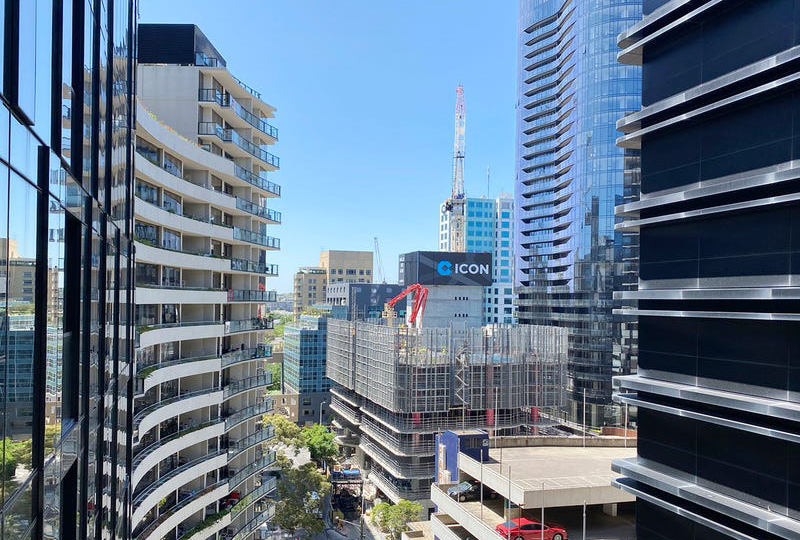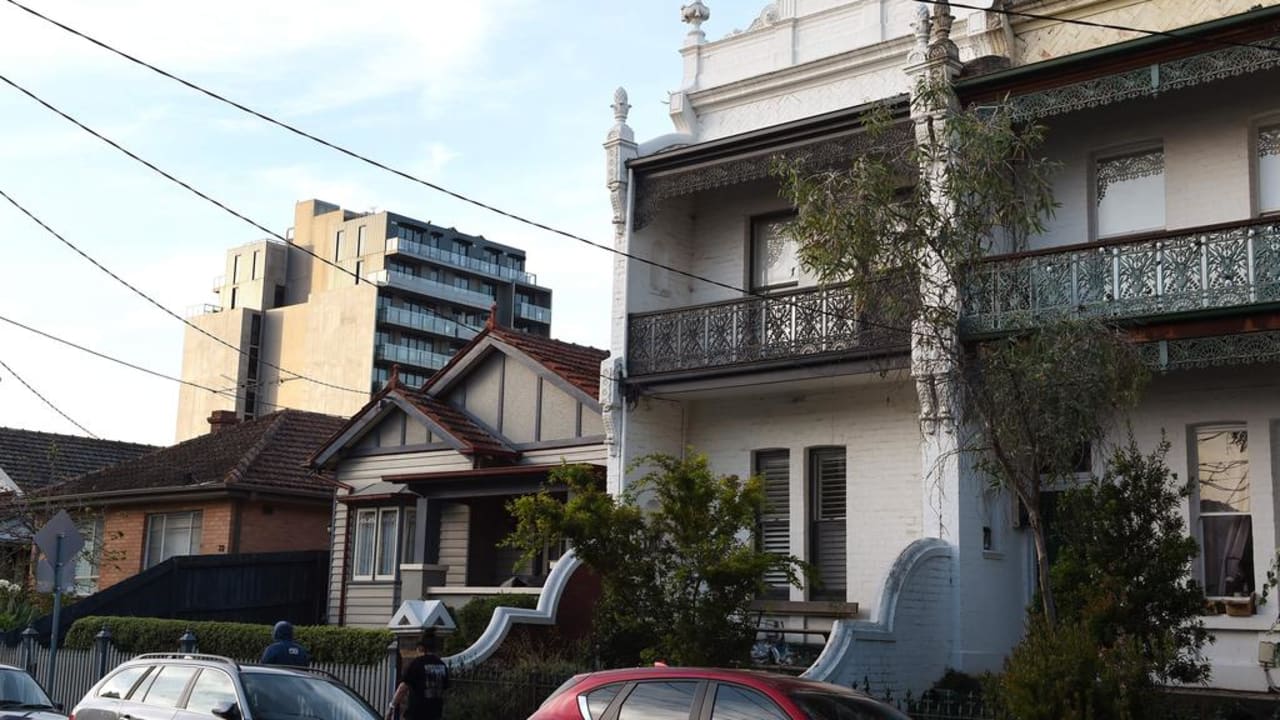
A delicate balance must be struck between maintaining the heritage of Melbourne’s established suburbs, and catering for a booming population. Picture: Josie Hayden
A “massive assault” on heritage is changing the faces of Melbourne’s most iconic suburbs forever as high-density development takes over the local strips residents love.
Plans to accommodate a booming population on track to overtake Sydney’s in 2030 are being achieved “by subterfuge” to the detriment of neighbourhoods, an emeritus professor says.
But economists stress the importance of development where people want to live in the inner and middle ring, with Melbourne one of the most unaffordable cities in the world.
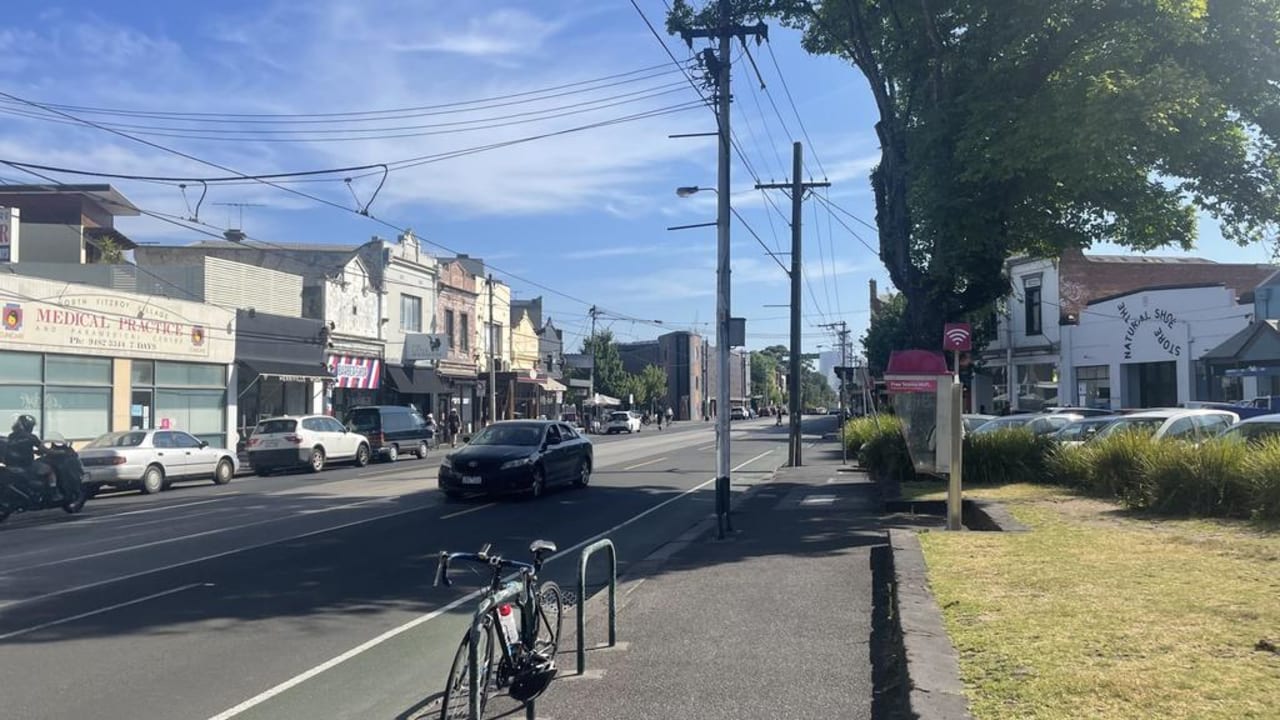
Fitzroy North village will get its first major apartment project in the coming years.
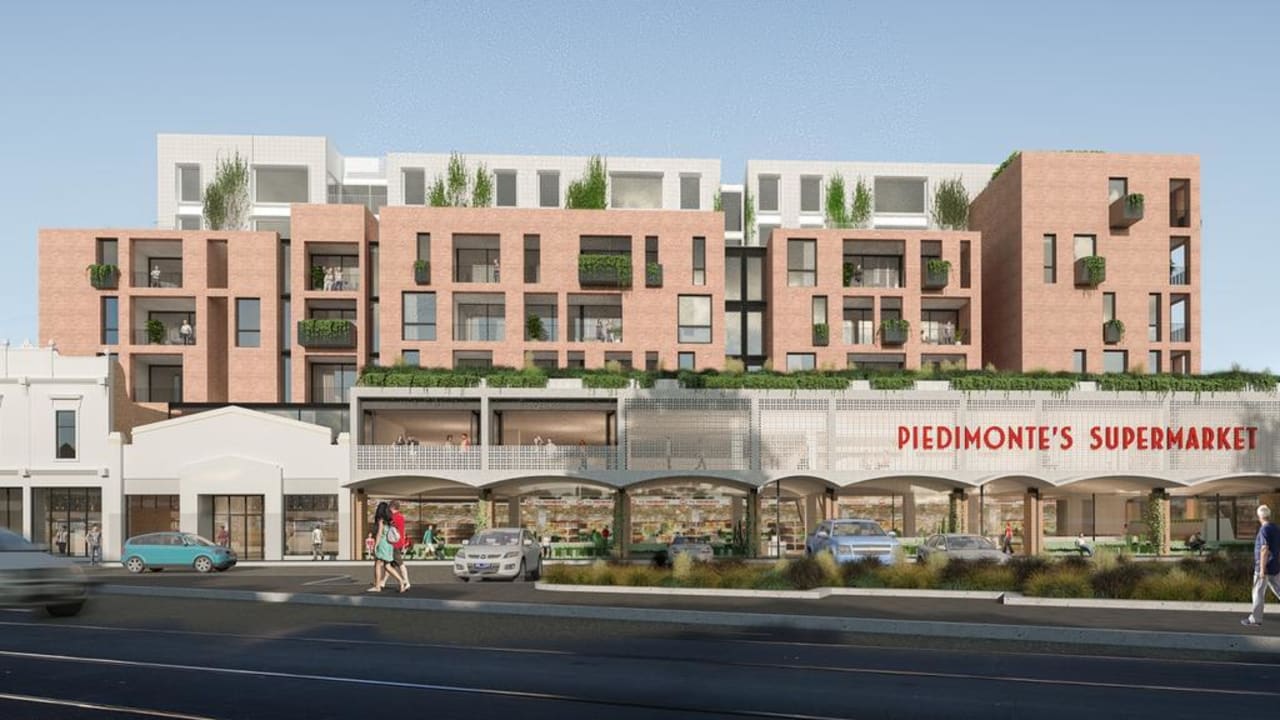
The Piedemonte family has approval to build apartments above its iconic grocer.
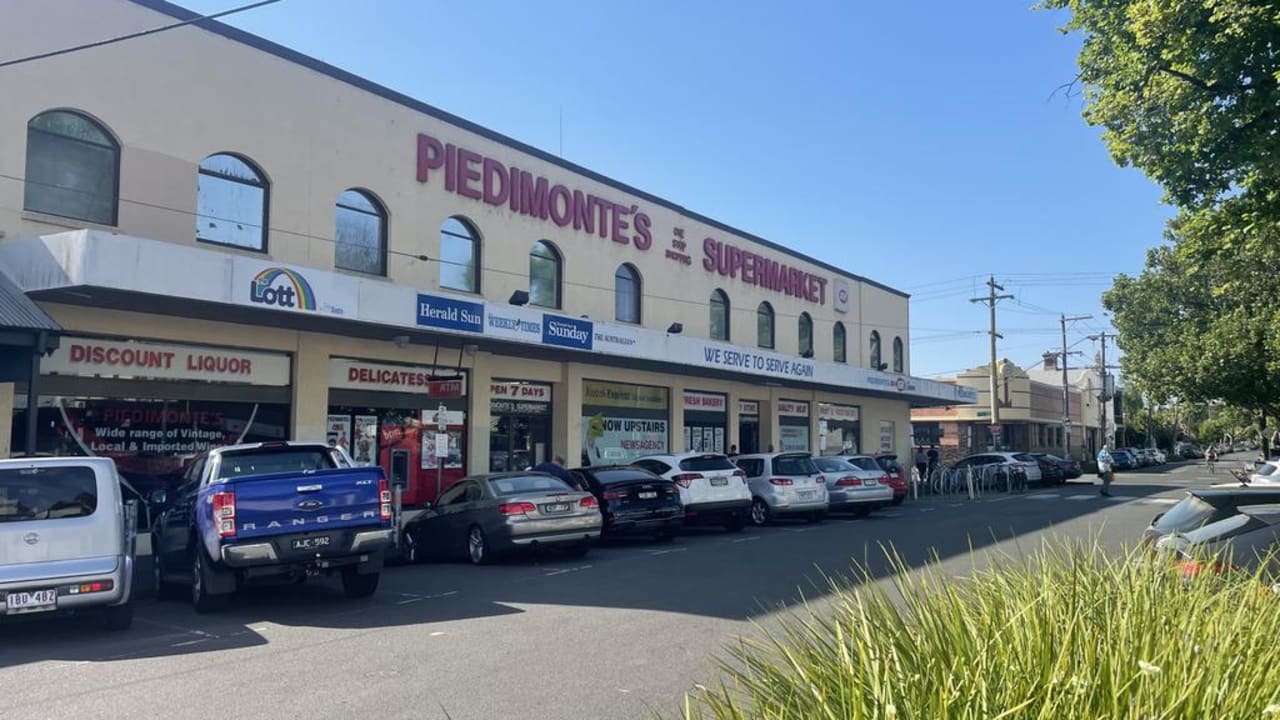
The much-loved, but well worn supermarket as it stands now.
The Sunday Herald Sun can reveal Stonnington (10,785), Yarra (9709) and Port Phillip (9126) as the council areas that have built the most high-density dwellings in the past 10 years.
Merri-bek (formerly Moreland) and Whitehorse are those closest to the city where the most townhouses and apartments have been approved since the housing affordability crisis came to the fore during the pandemic.
TOTAL APARTMENT AND TOWNHOUSE APPROVALS ACROSS MELBOURNE
July 2020-October 2022
Inner and middle Melbourne council areas
Melbourne: 7914
Merri-Bek (formerly Moreland): 7064
Whitehorse: 6160
Moonee Valley: 5198
Port Phillip: 5050
Stonnington: 4986
Glen Eira: 4838
Banyule: 4404
Darebin: 4108
Hobsons Bay: 4106
Bayside: 3858
Maribyrnong: 3516
Kingston: 3284
Boroondara: 3122
Manningham: 2644
Yarra: 2500
Hume: 1964
Brimbank: 1882
Source: Australian Bureau of Statistics
Activity centres around train stations and along main road tramlines in suburbs including Brunswick and Box Hill have catered to huge demand over the past decade, but the balance of development and heritage continues to rage in established suburbs that are changing rapidly.
Community group Protect Fitzroy North was fiercely opposed to the proposed scale of major apartment developments beginning to take hold in the peaceful inner suburb.
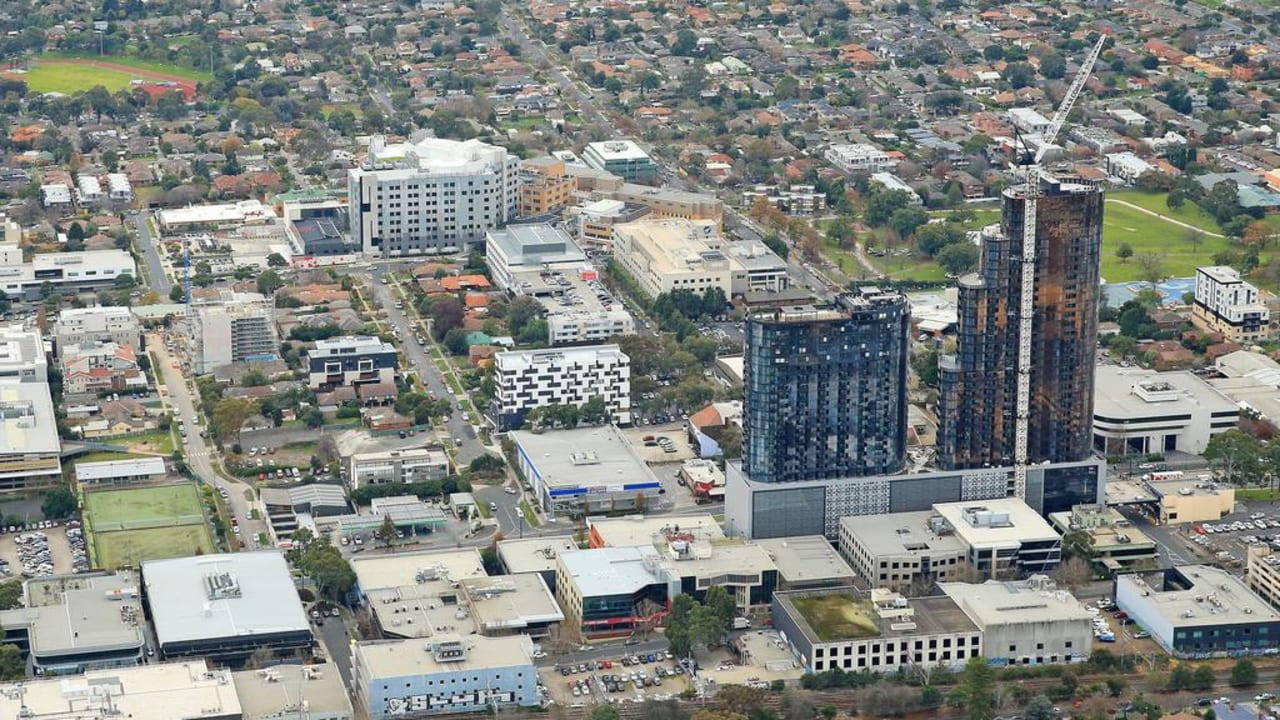
Whitehorse Towers in Box Hill became the tallest building outside the Melbourne CBD in 2017. Picture: Mark Stewart
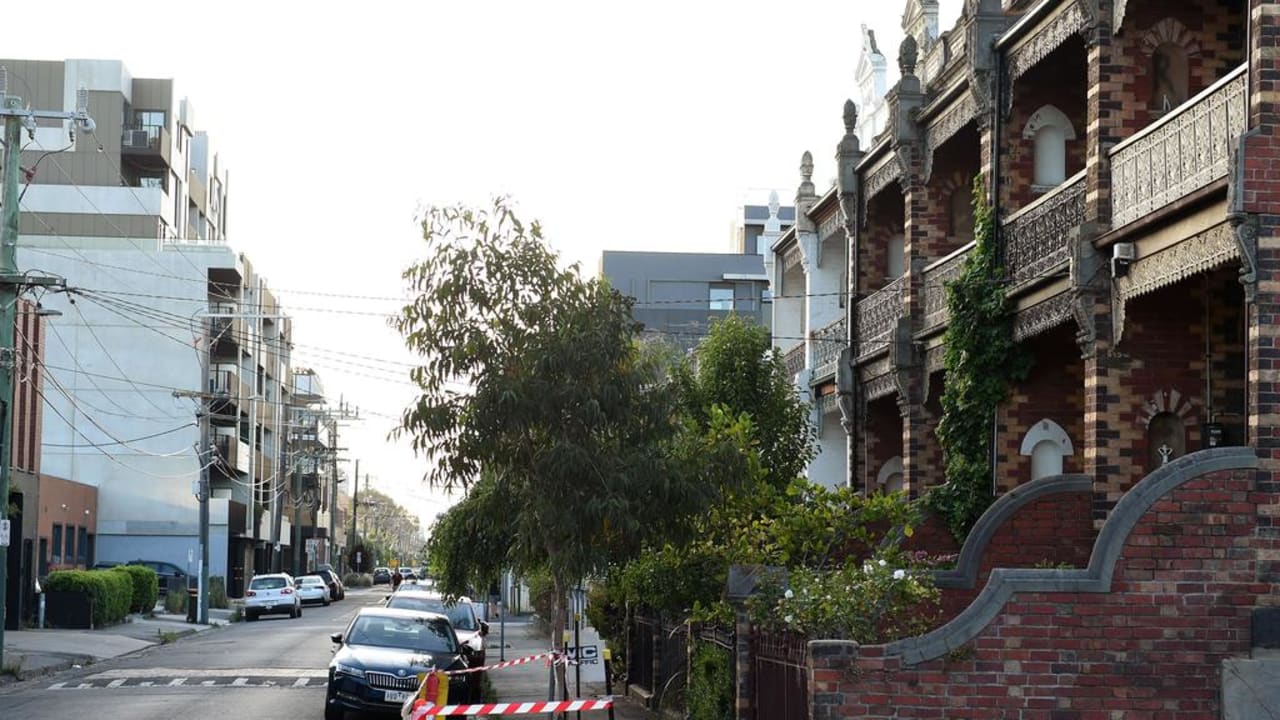
Heritage homes face apartment developments in Albert St between Fleming Park and Lygon St, Brunswick East. Picture: Josie Hayden
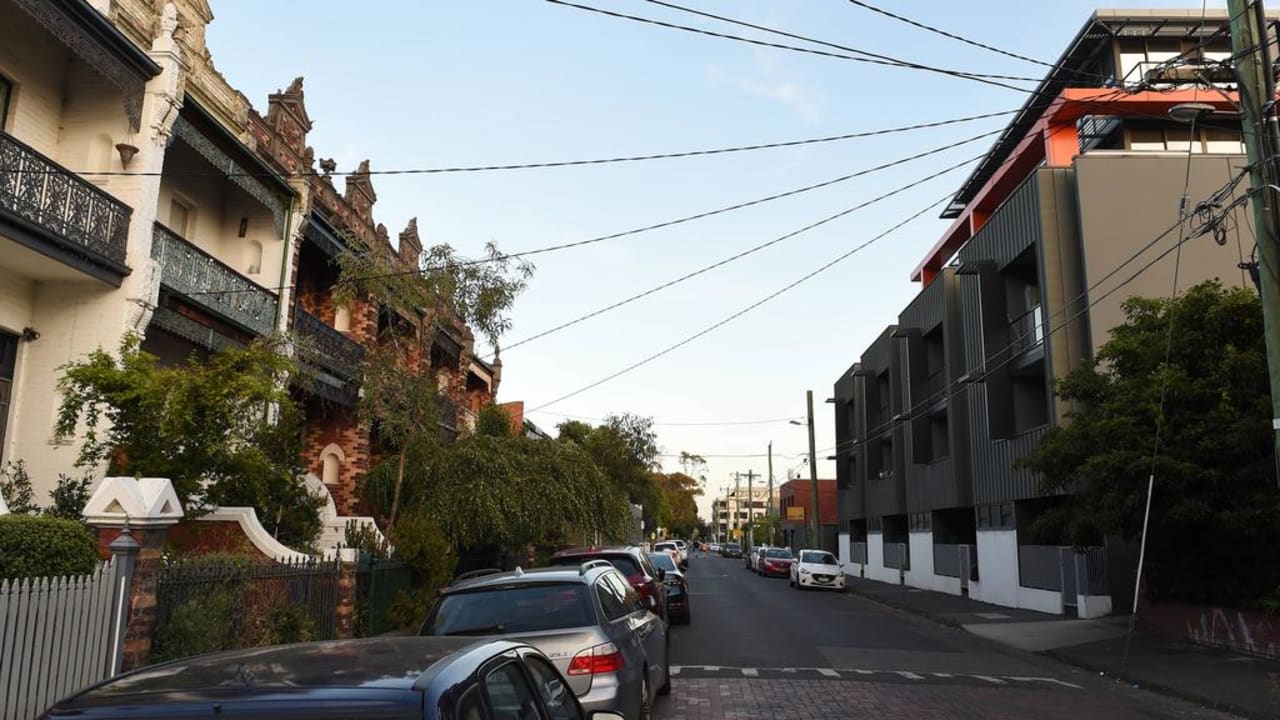
Merri-bek has added a vast amount of new apartment stock in its popular suburbs. Picture: Josie Hayden
RMIT planning emeritus professor Michael Buxton said the state government was achieving its accommodation targets “by stealth” and “subterfuge” … “to the detriment of the suburbs”.
“It’s adopted deregulating the planning system and minimised the rules to open up vast areas in established suburbs to developers. Basically, the government is saying ‘we’ll minimise the rules and let developers make all the decisions’,” he said.
“This is allowing incredible growth, that year, by year, by year, the government hopes will achieve its accommodation targets.
“This is the worst model possible for the future of Melbourne because it turns the city over to developers, and it will wreck Melbourne’s heritage value and amenity and turn Melbourne into a very alienated place.”
Prof Buxton said there was a misconception the middle ring was not lifting its weight, but there were about 18,000 apartments built there each year, with the inner region adding about 10,000-14,000 through high rise, and about 18,000 low rise homes in the outer suburbs.
PropTrack director of economic research Cameron Kusher said development of the inner and middle rings was incredibly important for overall affordability and liveability.
“The areas that are desirable in inner city areas are generally better catered for amenities, schools, proximity to hospitals, the city and public transport,” he said.
“They’re desirable for a reason. As the population continues to grow, we can’t just push people to the outskirts of the city, where there is a lack of these services and amenities.”
Mr Kusher said middle ring residents were often opposed to added density, but developments could include townhouses and four-five storey apartment buildings that were not high rise.
Ray White chief economist Nerida Conisbee said development in Melbourne had been “great” and the city had done a better job at mediating affordability than Sydney.
“Apartments are being built in places with excellent public transport and retail amenity, very central, close to universities, and it has kept pricing very affordable,” she said.
“You can buy an apartment for $500,000 in Melbourne’s CBD, a global city — I doubt there would be any other global city where you could buy an apartment at that price, it has been quite incredible what’s been done.”
Ms Conisbee also pointed out the importance of development in established suburbs for unlocking family houses and allowing older residents to move into more appropriate homes.
“In many desirable suburbs around Australia there’s a lot of backlash against higher density, but at the same time they really need it because it’s really difficult for people to downsize in place because suitable accommodation is not available to them,” she said.

Rich-lister property developer Tim Gurner is leaving his mark on the city. Picture: Aaron Francis / The Australian

Gurner’s Palladian development at 26-56 Queens Pde, Fitzroy North, is taking shape now.
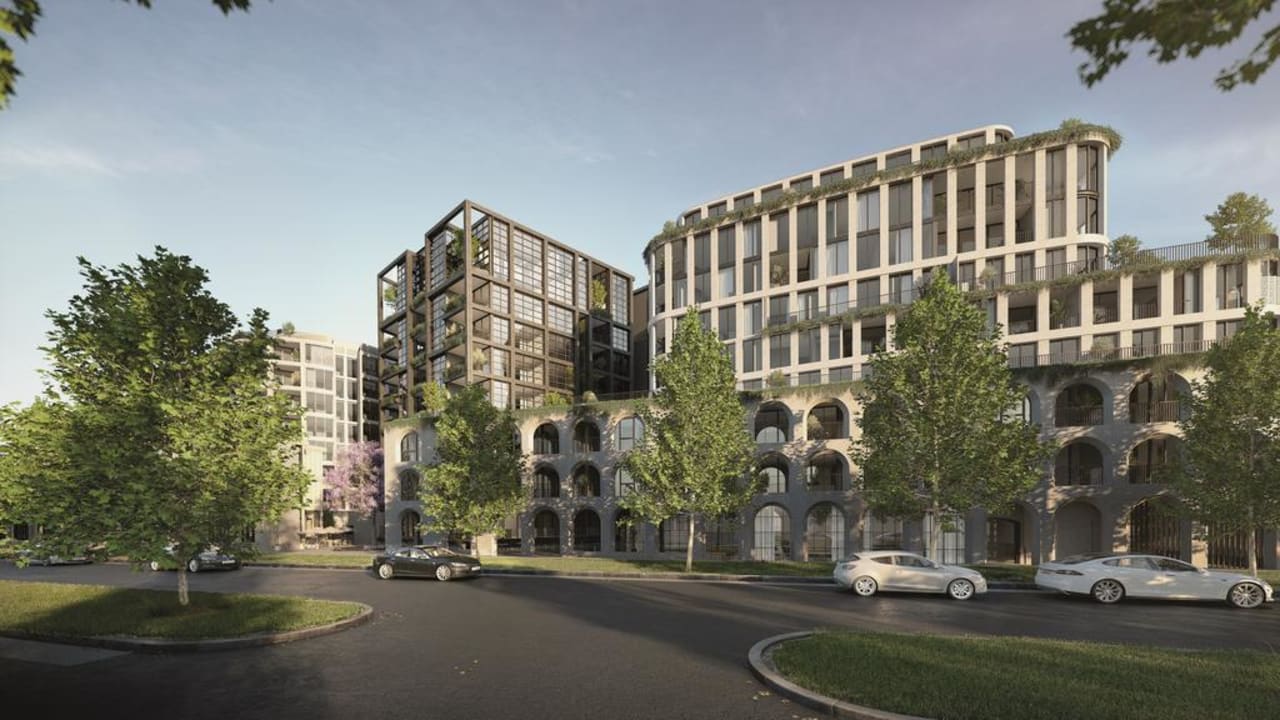
Original plans were revised after fierce local opposition.
Prof Buxton said the city “can have our cake and eat it too” but it required the state government consulting residents and councils “and that’s what the government is not doing”.
“It’s a very autocratic model, and it’s been very effective in achieving enormous development, and it’s changing the very nature of the middle ring to the detriment of the suburbs,” he said.
“Few western cities allow such a massive assault on its heritage and amenity, it’s not generally done, governments find other ways to achieve their ends.
“The best way is to consult and work with the people.”
The scale and height of controversial developments by Gurner at 26-56 Queens Pde and the Piedemonte family above its iconic grocer in Fitzroy North were fiercely opposed by local residents, leading to amendments to original plans that were ultimately approved.
Prof Buxton said the ideal form of development that protected heritage was of infill sites in established suburbs close to their traditional appeal, which could include showrooms and 1950s commercial buildings.
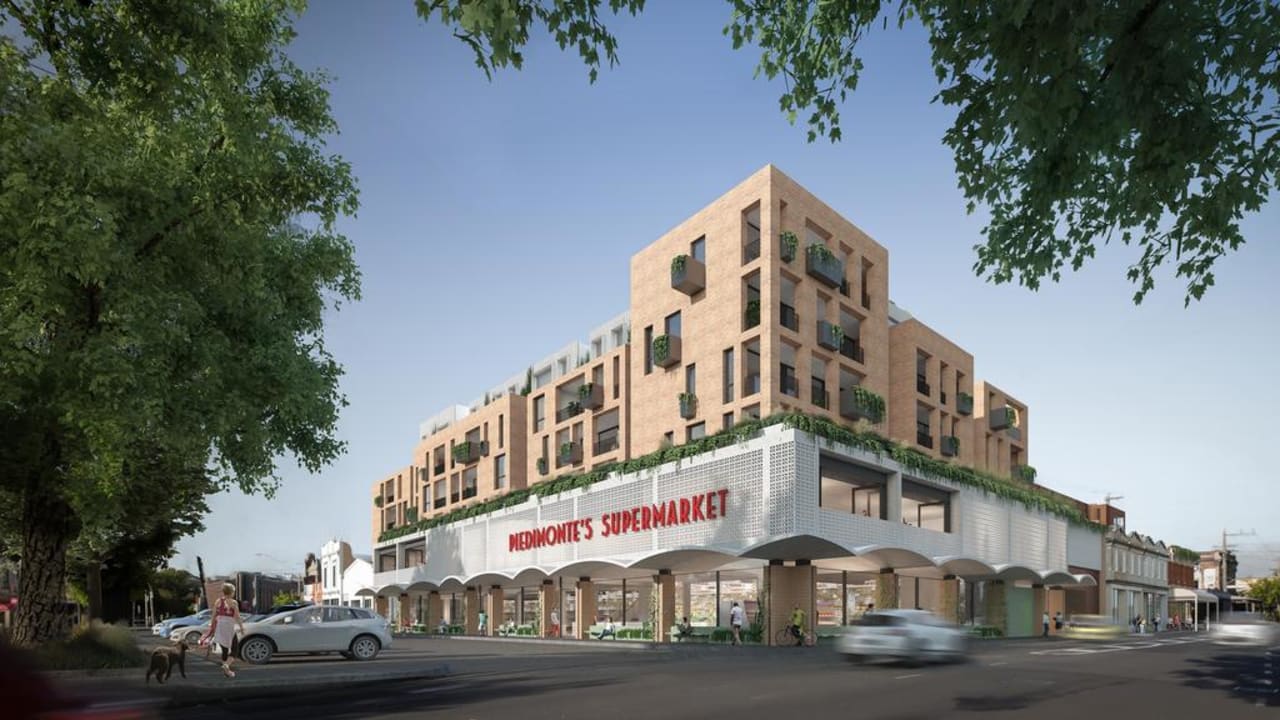
What the planned Piedemonte’s redevelopment will look like.
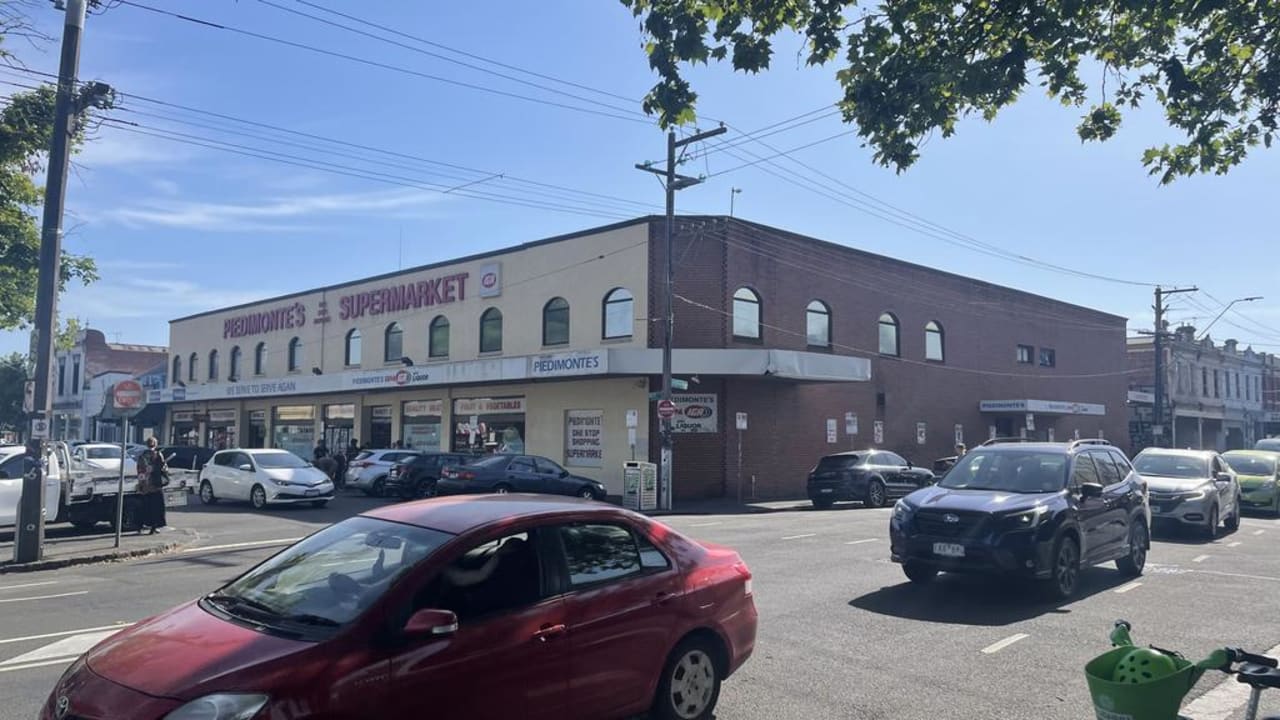
The Best and Scotchmer street corner site now.
Local councils are usually responsible for assessing planning applications under their municipality’s planning scheme, but the Minister for Planning also does have the power to “call-in” an application from a local council or VCAT and make a decision on the application.
Ms Conisbee said high density could be done well and backlashes usually occurred when it was not.
“Perhaps development was done too close to the street, they’ve put retail at the bottom but haven’t been successful at leasing it out and that leads to empty shops, which can look pretty unsightly,” she said.
“High density done well is appropriate in terms of set backs and design, and they’re also able to ensure if they do put in businesses the businesses are successful and remain full.”

Merri-bek has developed extensively around Anstey Station, Brunswick. Picture: Josie Hayden
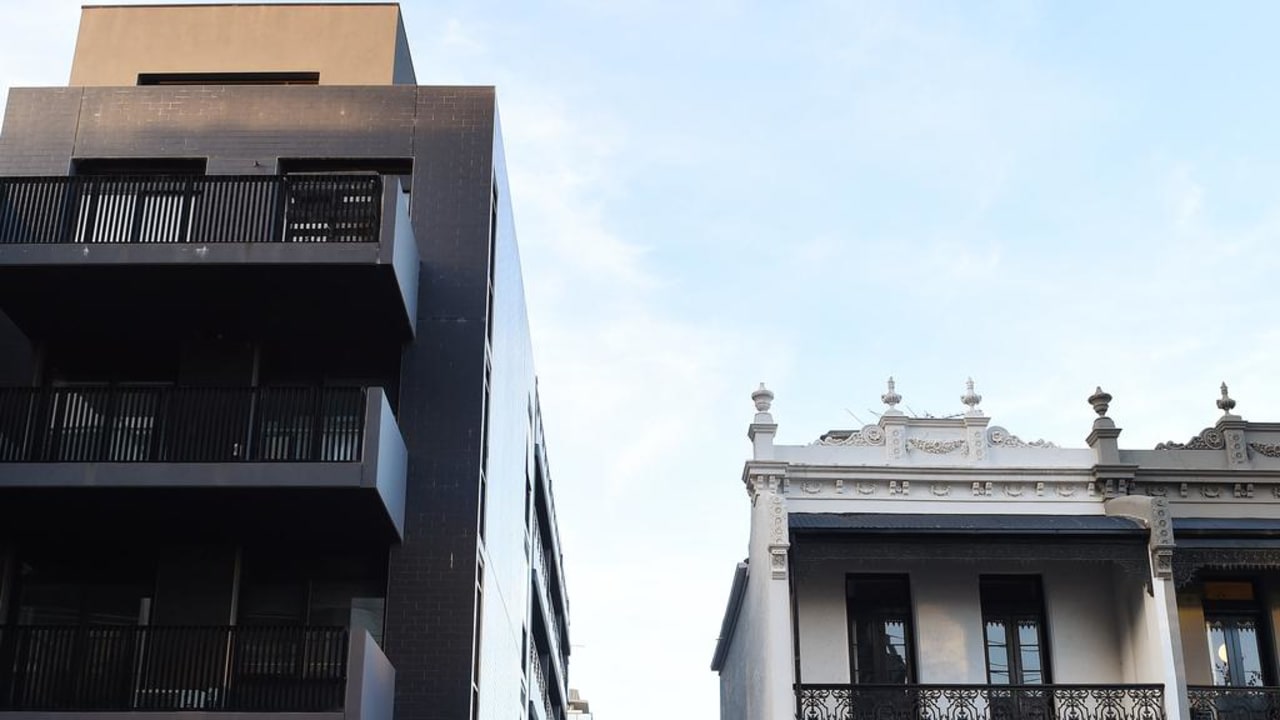
New apartments and heritage homes sit seemingly peacefully alongside one another. Picture: Josie Hayden
Housing Industry Association Victorian director Keith Ryan said developers would be approaching cautiously larger developments that would take longer to construct amid supply chain and trade issues.
“There is tension between the very tight rental market, which should prompt investors to create multi-unit starts,” he said.
“But there is also developer hesitancy to commit to long-term projects given uncertainty around supplies of labour and materials.”
HIGH DENSITY DEVELOPMENT (dwellings in multi-unit developments of 4 storeys or more) PAST 10 YEARS
(FY 2012-13 – FY 2021-2022)
Melbourne: 46,110
Stonnington: 10,785
Yarra: 9709
Port Phillip: 9126
Merri-bek (formerly Moreland): 8557
Glen Eira: 8385
Whitehorse: 8139
Boroondara: 6932
Maribyrnong: 6702
Moonee Valley: 6112
Darebin: 4588
Manningham: 3842
Bayside: 3742
Banyule: 3294
Kingston: 2977
Hobsons Bay: 990
Source: www.realestate.com.au







